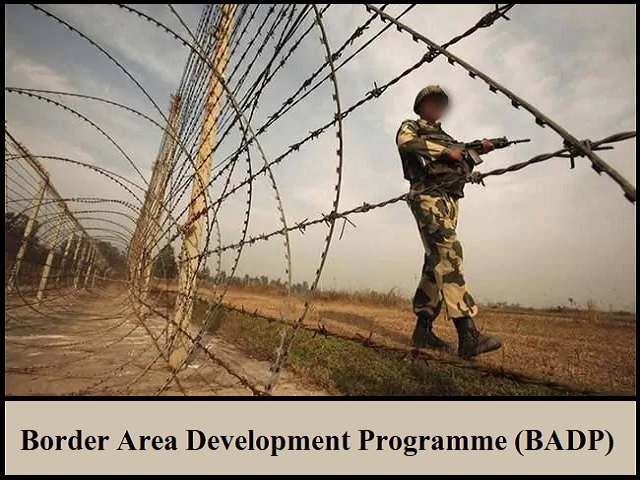
Context
While addressing the Border Area Development Conclave, the Defence Minister stated that Border area development is the great way to deal with geo-strategic challenges.
About
- India’s geo-strategic position is such that it’s exposed to different kinds of challenges and the best way to cope with them is to ensure border area development, as border villages are the state’s first villages and not remote areas.
- He highlighted the goal is to convert the villages along the Northern borders, mainly in Uttarakhand, Himachal Pradesh and Arunachal Pradesh, that are suffering from constrained connectivity and infrastructure, into model villages.
Borders in India
- India currently has more than 15000 km of land borders and more than 7500 km of maritime borders.
- It shares borders with seven countries including Afghanistan, Pakistan, China, Nepal, Bhutan, Bangladesh and Myanmar.
Border Management in India
- Border guarding responsibility first of all was with the state forces submit-independence, but the same was located inadequate to deal with the challenges and threats.
- Central armed police forces (CAPFs) were raised underneath the Ministry of Home Affairs (MHA) and had been tasked to defend the borders under the control of the ministry.
- In case of lively hostilities, the Army is given the responsibility to guard the borders.
Need for Border Management
- India- Pakistan Border: The border with Pakistan has been a problematic one since India’s independence.
- Despite the accession of Jammu and Kashmir (J&K) to India as per the Indian Independence Act of 1947, Pakistan fought four traditional wars with India specifically in 1947-48, 1965, 1971 and 1999.
- It has also been engaged in a proxy war as well both within the state of J&K and Punjab.
- The border is energetic within the shape of LC in which the Army has been deployed similarly to the BSF.
- India- China Border: India has disputed borders with China in Ladakh, Middle Sector, and in Arunachal Pradesh. Despite many levels of talks, very little progress has been made to remedy the dispute.
- India-Bangladesh Border: The relations among India and Bangladesh have been shifting up and down based on the government in power.
- The contemporary relations with Bangladesh are appropriate but Pakistani efforts to create a non secular divide, Chinese inroads and present political state of affairs within the country have made the peace way at risk of disruption.
- India-Bhutan Border: India is chargeable for the defence of Bhutan and consequently responds to Chinese aggression even in Bhutan which took area in Doklam in 2017.
- India-Nepal Border: Due to close relations among India and Nepal, Nepalese are working within the Indian Army as squaddies and porous border control remains a task.
- Several Chinese activities in terms of infrastructure development have come up in Southern Nepal near Indian borders.
- Pakistan’s ISI is likewise the usage of the porous nature of this border to infiltrate militants for anti-statewide activities in India.
- India-Myanmar Border: India and Myanmar share a huge land boundary with the northern end bordering China and the southern cease bordering Bangladesh.
- The border remains porous as nearby communities are divided into both sides of the border.
- There are a massive variety of refugees getting into the northeastern (NE) states, in most cases in Manipur.
Challenges In Managing the Borders
- Length and Diversity: India shares borders with multiple nations totaling hundreds of kilometers.
- Porosity of Borders: Many parts of India’s borders are porous, allowing unlawful crossings of people, items, and contraband together with capsules and guns.
- Cross-Border Terrorism: India faces threats of cross-border terrorism, especially from Pakistan-based militant groups operating in Jammu and Kashmir.
- Transnational Crime: Transnational crook activities, along with smuggling of narcotics, fingers, and counterfeit forex, thrive alongside India’s borders.
- Ethnic and Tribal Dynamics: India’s border areas are regularly inhabited through various ethnic and tribal groups with historic, cultural, and social ties throughout borders.
- Dispute over Borders: India has unresolved border disputes with neighboring nations, most drastically with China and Pakistan.
- Infrastructure Development: Many border areas in India lack primary infrastructure along with roads, communication networks, and border outposts, hampering the effectiveness of border management efforts.
- Humanitarian Concerns: India stocks borders with nations experiencing political instability, humanitarian crises, and refugee influxes.
Source: The Indian Express
Post Views: 928
